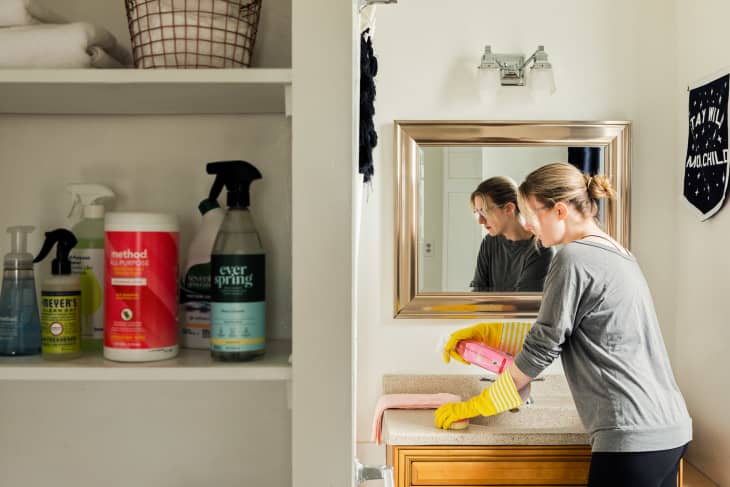A Microbiologist Shares How “Target Hygiene” Cleaning Can Help When Everyone’s Getting Sick

When everybody around you is getting sick, sanitizing your home should be one of your first lines of attack. But the prospect of scrubbing down your entire home understandably feels overwhelming. We’ve got good news for you: You probably don’t have to spend all day disinfecting. To decrease your stress about de-germing your home and increase the chances you’ll stay healthy, try the “targeted hygiene” approach.
The idea is that not all the germs in your household need to die. Instead, focus—or target—your disinfecting power on areas that are more likely to carry harmful viruses and bacteria, and the areas where you’re most likely to pick up those viruses and bacteria. Typically these are the spaces in our homes we commonly touch—called common-touch or hand-contact surfaces, according to Dr. Elizabeth Scott, professor of microbiology at Simmons Center for Hygiene and Health in Home and Community at Simmons University in Boston.
Scott says most viruses survive for hours, but there are bacteria that can last for several days on a dry surface. “The risk is that someone unwittingly or unknowingly touches that surface, then they bring their hands to their face and infect themselves,” she says.
What Are Some “Hand Contact” Surfaces?
Your door knobs, house keys, TV remotes, electronic devices (like your iPhone), and faucet handles probably have a higher concentration of germs that could get you sick than, say, your walls, cabinets, or windows. Targeted hygiene just means thoroughly disinfecting those areas, especially when someone around you is sick. Cleaning the right place at the right time.
The targeted-hygiene principle carries over to cross-contamination when you’re preparing food, which can also transmit pathogens. If you cut raw chicken on a cutting board, for example, targeted hygiene would mean disinfecting that cutting board before using it again and washing your hands right away before touching other foods or eating.
How to Practice “Target Hygiene” Cleaning at Home
How often you target your disinfecting isn’t a hard-and-fast rule, and that’s kind of the whole point. It’s not about deep cleaning once a week or once a month. You might have your general cleaning regimen, but targeted hygiene is more about reducing the risk of transmitting infections—which means it all depends on what’s happening in your home. A family member or roommate with a stomach bug or the flu (or raw meat on your countertop!) would be a cue that it’s time to disinfect those high-contact surfaces.
“If you have someone sick in your home, targeted hygiene is something you’ll want to do much more frequently, maybe even more than once a day if that person is touching things in the home,” Scott says.
While soap and water is a more-than-effective method for washing your hands (as long as you scrub for 20 seconds, per CDC recommendations), you’ll need to bring out the big guns if you want to avoid spreading or catching sickness. Scott emphasizes that true disinfectants, like 62 percent or higher isopropyl alcohol, a diluted bleach solution, or Clorox wipes, are the best way to prevent the transmission of disease in your home. Just make sure to follow the instructions on the product.